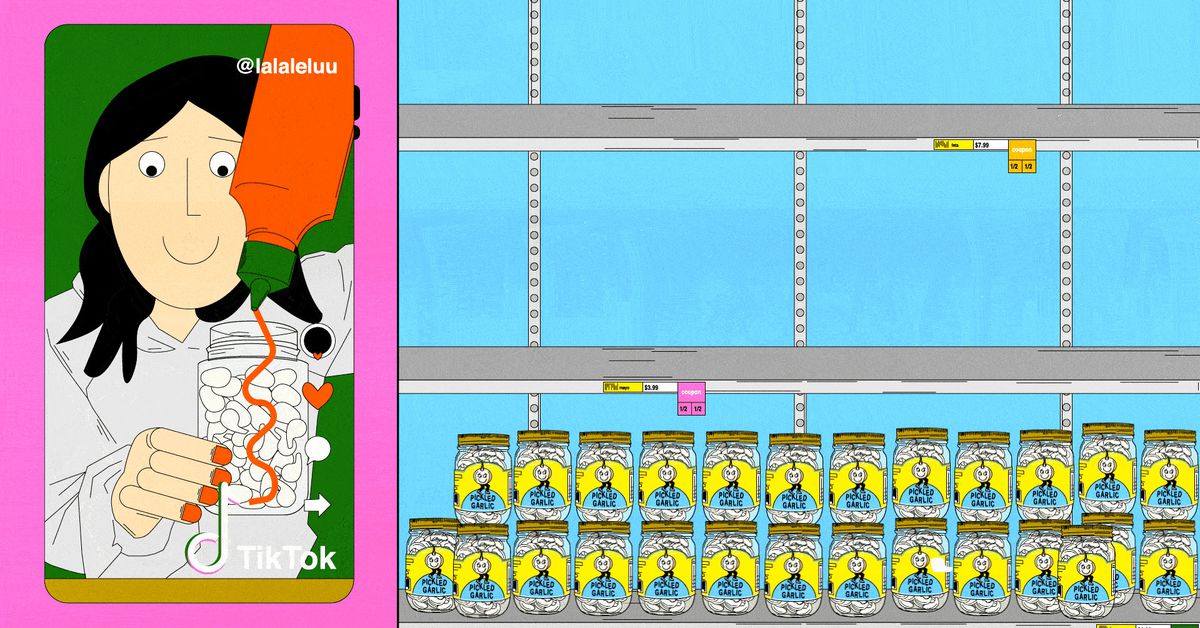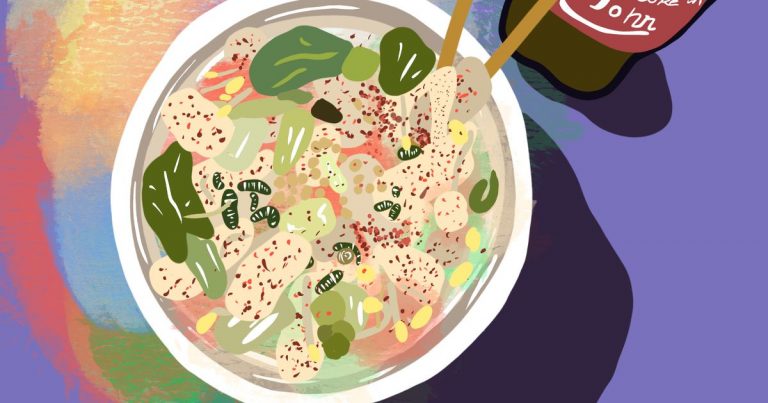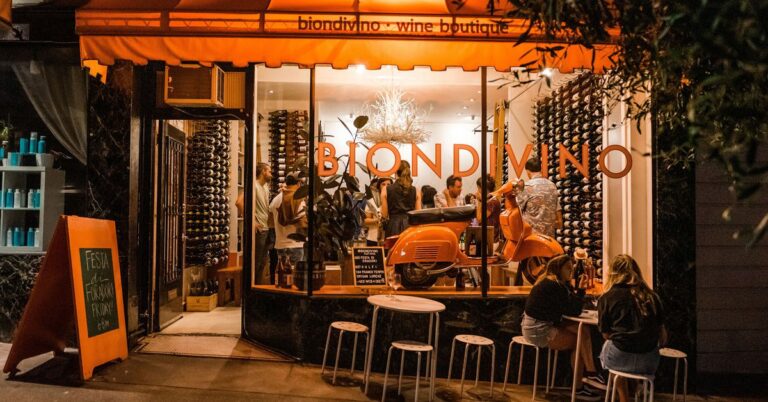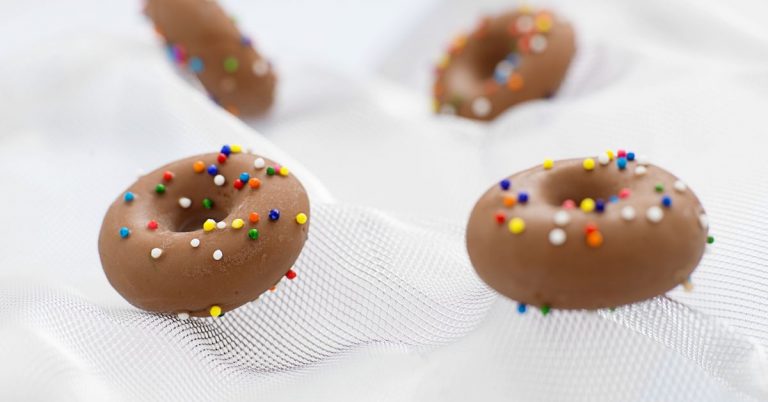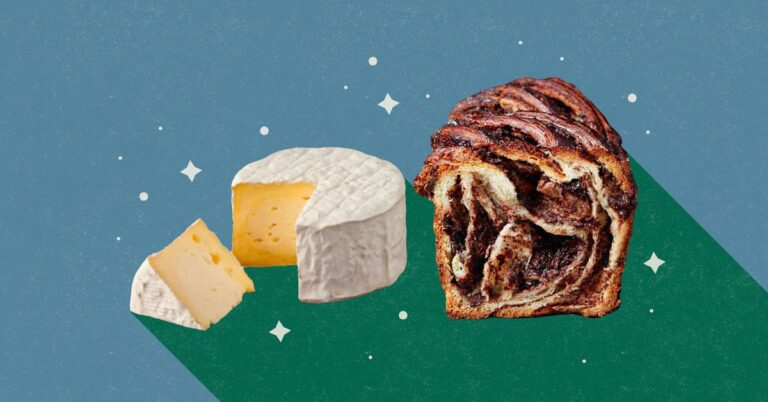How Some Viral TikTok Recipes Lead to Ingredient Shortages
I learned a hard lesson on a recent trip to my local Asian supermarket, Tan A. There, in a refrigerated display between the puffed tofu and quail eggs, gaped a hole where the Kewpie mayo would usually be found. Where were my beloved plastic-wrapped bottles with the eponymous little cherub? I wondered in a mild panic. When I found the shopkeeper and asked him where the Kewpie was, he threw his hands up in disgust: “Sold out! TikTok!” he yelled before shuffling away.
While TikTok trends touch on everything from fashion to dance moves, none may be as prolific and impactful as a viral recipe. Shortly after appearing on TikTok, you can expect to find food media diving in with their own takes, while Harris Teeter has started stocking “As Seen on TikTok” displays.
In a video posted on September 21 by Emily Mariko, the food blogger smashed up cooked salmon, and topped it with leftover sushi rice and an ice cube that, by not melting in the microwave, melted the minds of viewers. Mariko crowned the freshly steamed concoction with a mix of soy sauce, sriracha, and Kewpie mayo. She then added half an avocado, mixed the whole thing together, and ate it with squares of seaweed. “Best lunch of the week!” the caption exclaimed. She did a little dance in her chair to emphasize this point; the video has been viewed by 6.9 million people and counting.
Five days after Mariko’s TikTok went live, Google search trends for Kewpie mayo had quadrupled. Soon after, articles breaking down what Kewpie mayonnaise is, where to find it, and how to make your own started popping up everywhere, with some stores like Walmart reporting outages. “Who’d have thought a condiment would reach celebrity status? Well, anything goes in the world of TikTok. And Mariko has proven that Kewpie mayo has the ability to transform something as simple as salmon and rice leftovers into something truly gourmet,” a writer for the Independent proclaimed. The article went on to recommend that readers run out and buy Kewpie immediately, “as TikTok-famous products tend to sell out fast.” Unable to stock up on Kewpie, I did what I always do in a pinch — combined Duke’s mayo with a splash of seasoned sushi vinegar and a sprinkle of MSG and admired my own resourcefulness.
Viral food trends are nothing new for social media. “Yet the recent rise of food trends originating from TikTok is different from the trends of the past,” explains Sarah Rahman in the Michigan Daily. “The food is usually cooked rather than bought and can be made by anyone, often including younger generations. The most viral food trends usually use simple, accessible ingredients and don’t require much skill to master. Part of the allure is that even someone with very limited cooking experience can watch a minute-long video and think, ‘I can do that!’”
The salmon rice bowl trend is just a recent example in a growing group of TikTok-born food frenzies. At the beginning of 2021, it was Jenni Häyrinen’s oven-baked feta pasta (Uunifetapasta if you prefer the infinitely more enjoyable Finnish title) that caused customers to buy up the world’s stock of feta cheese, leading to what the New York Times called the “TikTok Feta Effect.” The TikTok effect has subsequently wiped out stores of Martinelli’s apple juice and Ocean Spray Cran-Raspberry juice (thanks to that beguiling TikTok of Nathan Apodaca sipping straight from the bottle on his longboard while listening to Fleetwood Mac’s “Dreams”).
All that virality has a major impact on an already shaky supply chain that’s being affected by the pandemic. “When TikTok makes some new recipe go viral, the first most responsive way to fulfill that demand is through safety stock,” that is, the reserves of a product waiting to be distributed, explains James R. Bradley, professor of operations management and information technology at the Raymond A. Mason School of Business at the College of William & Mary. But, Bradley goes on, due to pandemic strains on the supply chain, safety stock is limited, especially in the case of perishable items. “If the TikTok trends are significant enough, that safety stock is gone.”
From hordes of people panic-buying toilet paper and hand sanitizer to grocery stores putting limits on units of ground beef and Diet Coke, our entire relationship with shopping changed dramatically in March 2020. Over that time, consumers have been forced to get acquainted with a concept that most people didn’t think much about previously — that we’ve become accustomed to instant, unwavering access to whatever we want, whenever we want it.
Bradley describes the supply chain not as a fixed entity but as a series of steps that relate to a business’s capacity and production capabilities. A bottleneck in any one area (and there is a staggering number of complicated, interconnected areas, from labor to transportation to raw materials) can result in shortages on store shelves. Even without TikTok in play, that’s proving exceptionally frustrating to grocers at present — a struggle so widespread that the FTC is now asking chains to turn over information to help determine “whether supply chain disruptions are leading to specific bottlenecks, shortages, anticompetitive practices, or contributing to rising consumer prices.”
None of the half-dozen grocery chains I contacted would participate in an interview for this story. One source at a major food distributor said, “Corporate is still deciding on the best message/tools/strategy we want to provide to address this, since it’s such a touchy issue.” One would think that big box retailers would be keen to get some messaging out there — either, “Yes, we’re feeling the pressure of the global supply chain issues, but we’re taking steps to meet the needs of our customers” or, “No, we’re fine, nothing to see here. Please buy groceries.” Instead, there’s been a radio silence that borders on denial.
In an email, Jim Dudlicek, director of communications and external affairs for the National Grocers Association, says he isn’t too worried about the effects of social media, noting that trends have come and gone for decades, and that the marketplace has usually “dealt with the resulting increased demand for related products.” But he notes that “such trends occurring at a time when the supply chain is facing additional challenges … could make those products more scarce.” Put more bluntly by Bradley, “A big spike from TikTok can be a problem to begin with, but in the current situations where buffers don’t exist and where ramping up the supply chain is basically impossible, don’t expect to see that mayonnaise any time soon.”
Bradley says he’s skeptical that most individual TikTok trends will have lasting effects, though chains are learning how to compensate for supply issues in real time. A company might notice a surge a week after the fact and then react through various marketing ploys, pointing consumers to related products or possible substitutions. Remember the Ocean Spray Cran-Raspberry moment? According to an email from Monisha Dabek, chief commercial officer and general manager, USA, at Ocean Spray, the viral TikTok video “drove +11% sales growth for Cran-Raspberry® and +3-4% for the entire Ocean Spray® franchise. For the first time, Ocean Spray’s Instagram followers grew by four times in one week alone.” Dabek says the brand took that opportunity to point consumers toward other cranberry products, highlighting the health benefits of cranberries for this younger-skewing (and ostensibly more health-conscious) audience.
Volatility in the supply chain is also forcing grocers to use more innovative forecasting tools, such as artificial intelligence, to help predict consumer interest. By using Wi-Fi-enabled cameras and collecting real-time data, for example, Walmart was able to increase overall shelf-stocking efficiency in the meat department by 90 percent, improving sales by 30 percent. And Kroger is leaning heavily on tech to improve the customer experience (and sales), investing in fully automated warehouses staffed by robots.
AI-powered forecasting tools are another example of technology that’s meant to soothe inventory hiccups. According to the robotics research company Robo Global, “AI algorithms do not purely depend on the historical data available at stores. They can self-learn and create forecasts even when the data is limited — for example when introducing a new product or testing a new promotion technique … a good AI model can make predictions about products at a granular level considering local and regional trends.” Who knows, maybe they’ll even start following influencers on TikTok to try to get a jump on the next big viral push.
Ultimately though, when a video clears store shelves of pickled garlic, the burden falls on consumers to get creative, either by looking for alternatives or by making their own versions of the newly hard-to-find staple (like my Kewpie hack). Discovering that TikTok had the power to deplete stockpiles of Kewpie mayo (or feta before that) was unsettling, but what was far more interesting was the speed at which even small retailers have been able to adapt. On my next visit to Tan A, I couldn’t help but notice that the display of Kewpie was fully restored and bigger than ever, and yes — just in case the TikTok effect were to strike again — I made sure to stock up.
Stephanie Ganz is a freelance writer working in Richmond, Virginia. Carolyn Figel is a freelance artist living in Brooklyn.
